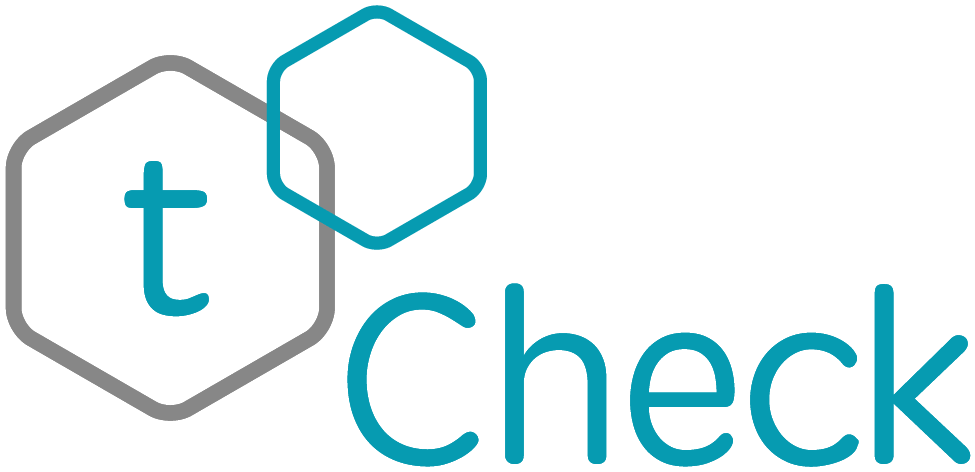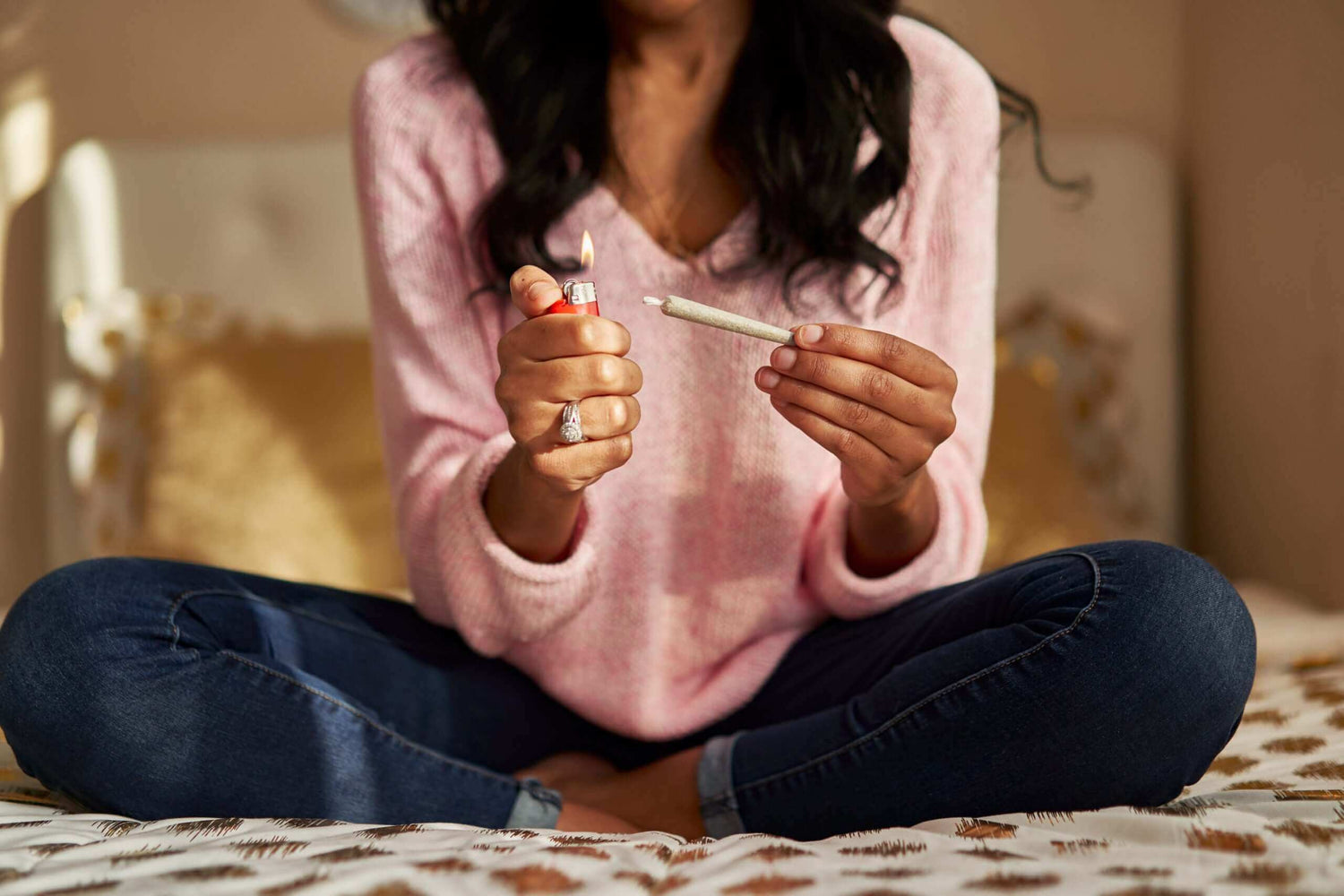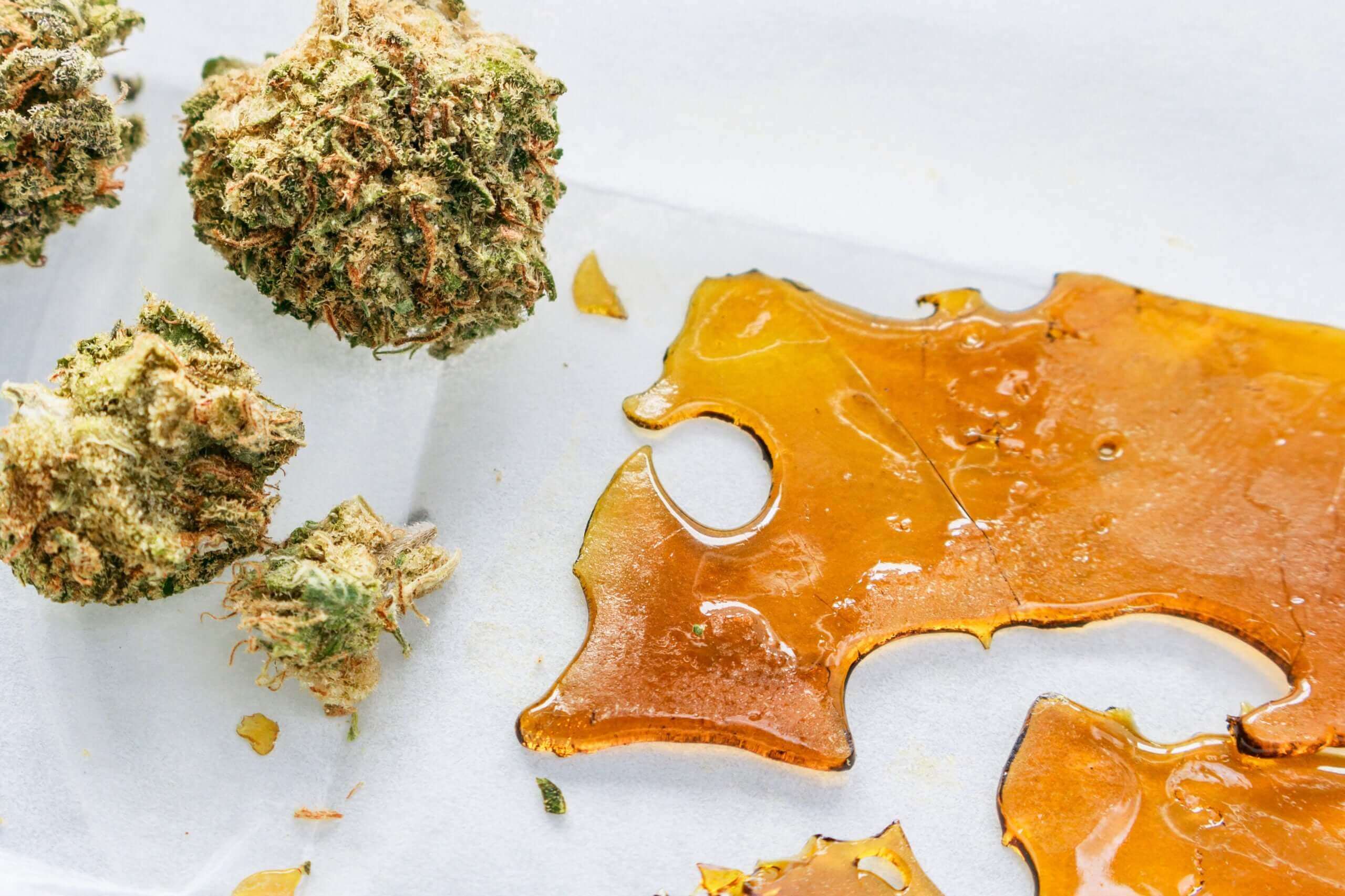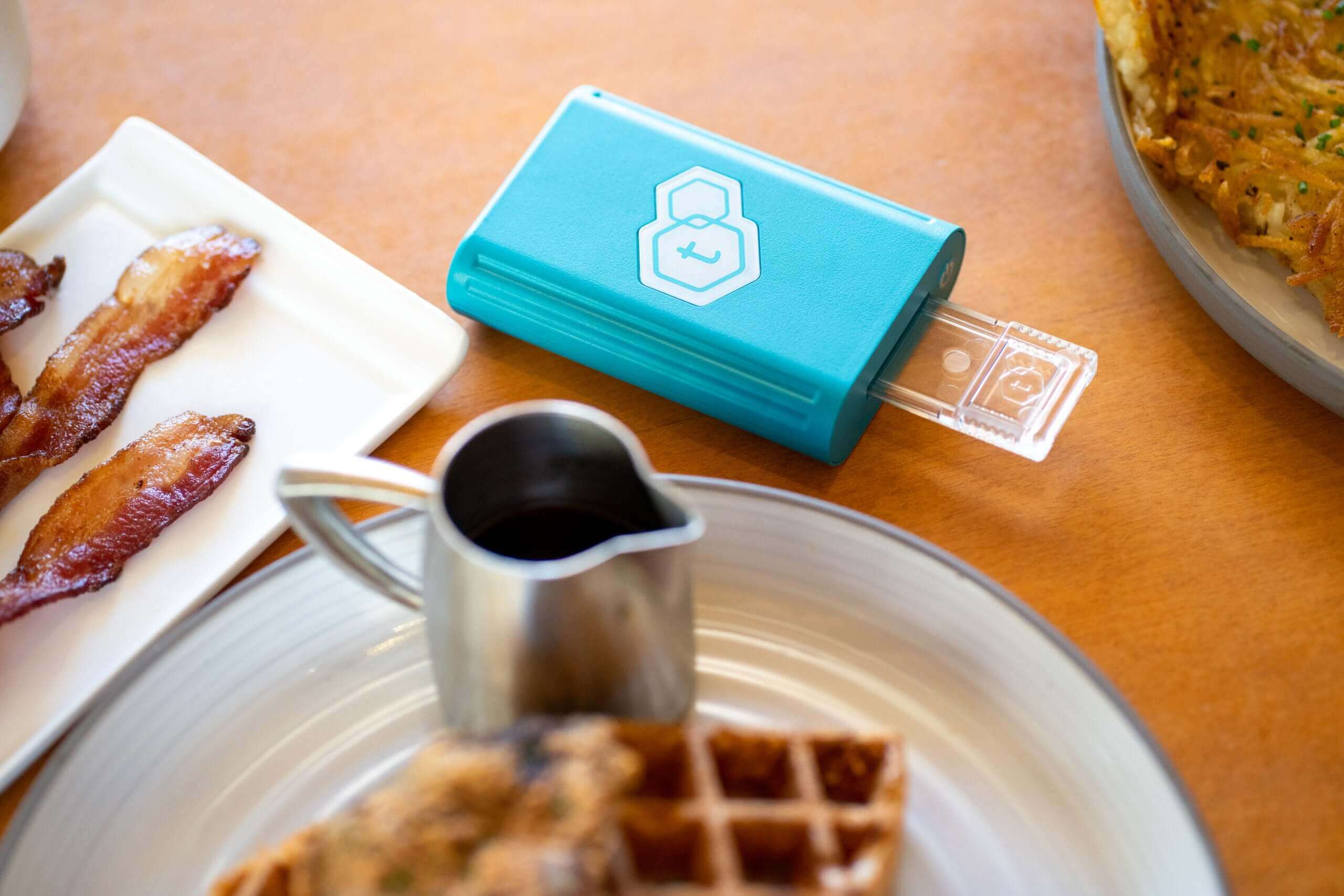THC may be magical, but its effects are not everlasting. In fact, the more frequently you smoke marijuana, the faster you’ll build a tolerance to high-THC strains. Thankfully, there’s an easy hack you can use to reset your ECS: take a short smoking break! Scheduling a few “T breaks” throughout the year will keep your CB1 receptors in tip-top shape.
Luckily for today’s tokers, you can use technology to track your THC tolerance. With one of tCheck’s hi-tech scanners, you could keep accurate notes of your favorite strain’s cannabinoids. This valuable data could help you track your THC intake and determine your tolerance levels.
Why Your High Gets Denied — How Does THC Tolerance Work?
Before we explain how to take a cannabis break, it’s important to understand the science behind THC tolerance. As you might already know, THC binds directly to the brain’s CB1 receptors, thereby triggering a “high” sensation. However, if you keep using high-THC strains within a short time, the body will try to reestablish homeostasis by blocking these THC molecules.
Not only will CB1 receptors become “desensitized,” they may literally retreat. According to the latest scientific research, overworked CB1 receptors put out phosphates that cause them to turn away from each cell’s surface. So, the more often you use THC, the fewer CB1 receptors there will be to pick up phytocannabinoids.
However, there’s no need to fear cannabis kills brain cells like harder drugs do. Indeed, the fact that tokers can recover from THC tolerance in such a short period shows these CB1 receptors aren’t permanently damaged.
How Long Does It Take For THC Tolerance To Set In?
Because everyone has a different genetic code, there’ll never be a standard THC tolerance level. However, a few recent studies can give us a general “THC tolerance timeframe.”
For instance, scientists at the Medical College of Virginia examined how long it took mice to develop a tolerance to THC injections. After just 1.5 days and three THC shots, doctors found the mice had already developed a tolerance. When they took the mice off of THC, it took about 11 days for them to reach their pre-THC baseline.
Another trial out of Bangalore suggested THC has a half-life of five to twelve days for active users.
However, if adults only used cannabis infrequently, THC seemed to have a half-life of about 1.5 days.
While this data is worth keeping in mind, the only way to figure out your THC tolerance is to write down your daily weed consumption and its effects. For the most accurate results, be sure to use a tCheck potency tracker to verify how much THC is in your cannabis. Knowing this info will help you figure out your tolerance level.
How Long Should A “T Break” Last?
Just like determining when THC tolerance begins, it’s impossible to say when it ends for each toker. However, if you’re a frequent cannabis user, you should try to abstain for two to three weeks if you want to experience the best results. According to the National Institute of Mental Health, cannabis users who stopped smoking for one month had an almost complete recovery of CB1 receptors.
If a month-long “T break” seems impossible, here’s some good news: a two-day “T break” could be beneficial! Indeed, a clinical trial out of Yale found that chronic cannabis users had a lower THC tolerance after ditching dagga for two days. To be fair, researchers also said it takes one month for cannabis smokers to fully rebuild their CB1 receptors.
Is “Weed Withdrawal” For Real?
While cannabis withdrawal isn’t as intense as coming off hard drugs, you must prepare for it before going into a “T break.” Many chronic cannabis smokers report mild to moderate side effects once they stop smoking their favorite strains. Typical withdrawal symptoms include headaches, depression, and general irritation. Some people also notice differences in appetite and digestion after going off marijuana.
If you’re concerned about withdrawal symptoms, you may want to speak with a doctor who has experience with medical marijuana. You should also consider gradually tapering down your marijuana use rather than stopping cold turkey.
Keep in mind that withdrawal symptoms usually peak within the first 72 hours. During this time, you should schedule a few fun outdoor activities with friends to help distract you. Regular exercise could release “feel-good” endorphins that may counter withdrawal side effects.
Do You Need To Take “T Breaks” While Microdosing?
Microdosing is a relatively new phenomenon that involves taking tiny, pre-measured doses of a drug throughout the day. The goal of this practice is not to get high. Instead, you only want to take enough THC to feel a slight buzz. When you’re microdosing correctly, you should feel subtle effects from cannabis that enhance your creativity and productivity.
If you want to use marijuana to self-medicate, microdosing may be a viable way to feel good without interfering with daily life. However, for microdosing to work properly, accurate dosing is critical. If you consistently go above the “sub-perceptible level,” you run the risk of developing a THC tolerance.
While you don’t need to take a “T break” when microdosing cannabis, you should schedule one or two days off per week. This short break will give your CB1 receptors some “breathing room” to recover in-between sessions.
By the way, you could learn more about the benefits of microdosing on this previous tCheck blog post.
What About “C Breaks?” — Current Research Into CBD Tolerance
Now that CBD has gone mainstream, it’s no surprise that customers are concerned about building a “CBD tolerance.” However, according to recent research, it’s unlikely this non-intoxicating cannabinoid has the same effects as THC.
Indeed, new findings out of Dalhousie University strongly suggest CBD doesn’t build a tolerance. Scientists involved in this study found CBD blocks CB1 receptors from THC rather than landing on them.
Other studies suggest CBD has an indirect effect on the endocannabinoid system. Unlike THC, CBD seems to influence the body’s “feel-good” chemicals like serotonin and anandamide. So, CBD might help reduce THC cravings during a “T break.”
Please remember: We don’t have all of the answers on how CBD affects the body. At this point, however, it’s safe to say that “C breaks” will never be as trendy as “T breaks.”
Track Your T Breaks With tCheck!
In the 21st century, there’s no need to “guestimate” your THC tolerance. Indeed, with one of tCheck’s portable cannabinoid testers, you could get lab-quality results while chilling at home. Whether you enjoy using concentrates, edibles, or flowers, our scanners can clue you in on the exact cannabinoid percentages you’re about to enjoy. Recording this valuable info will clue you in on how THC affects your system.







